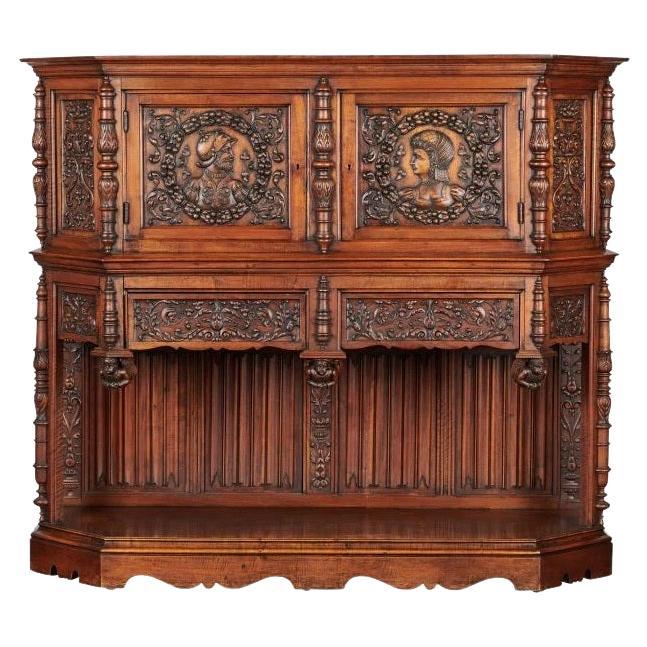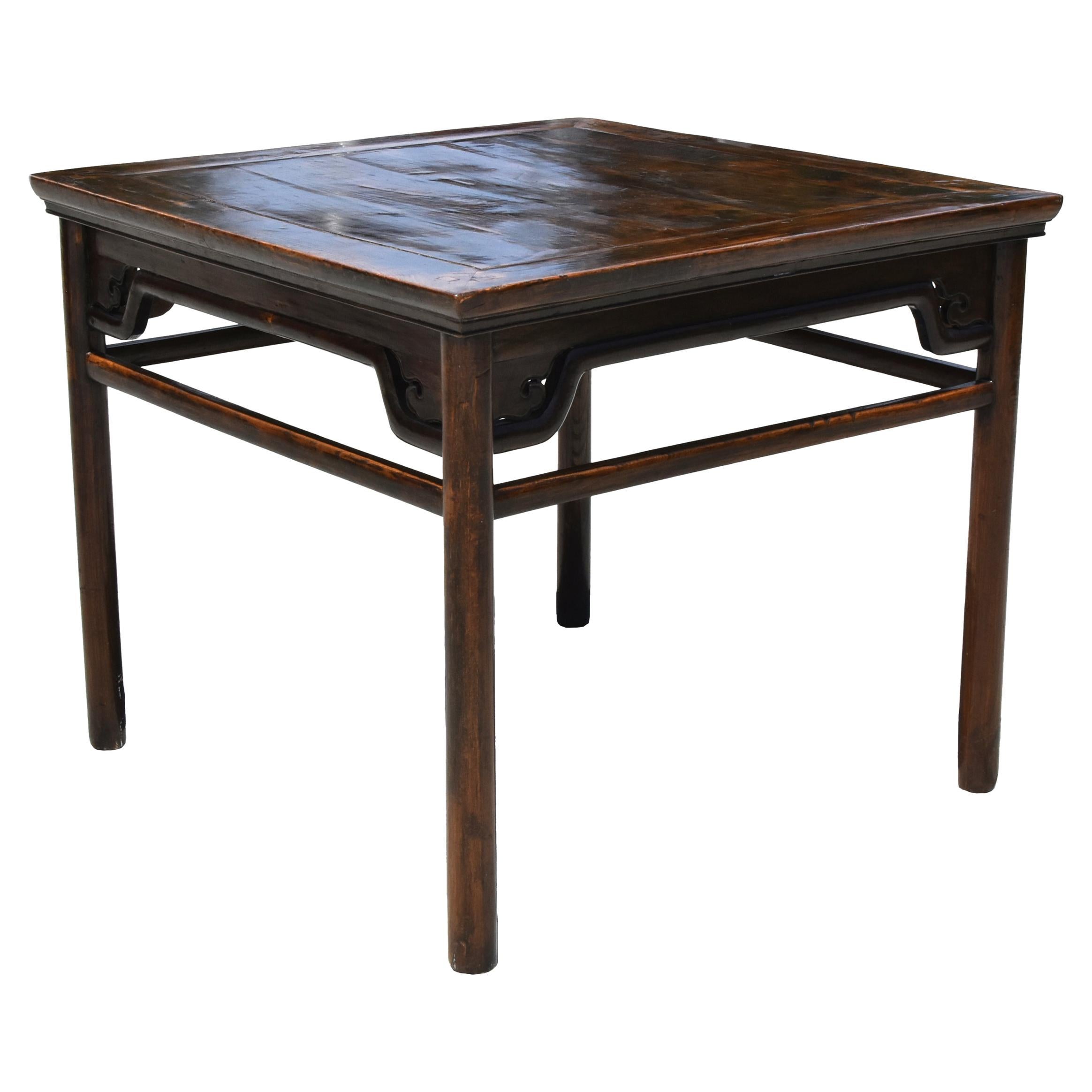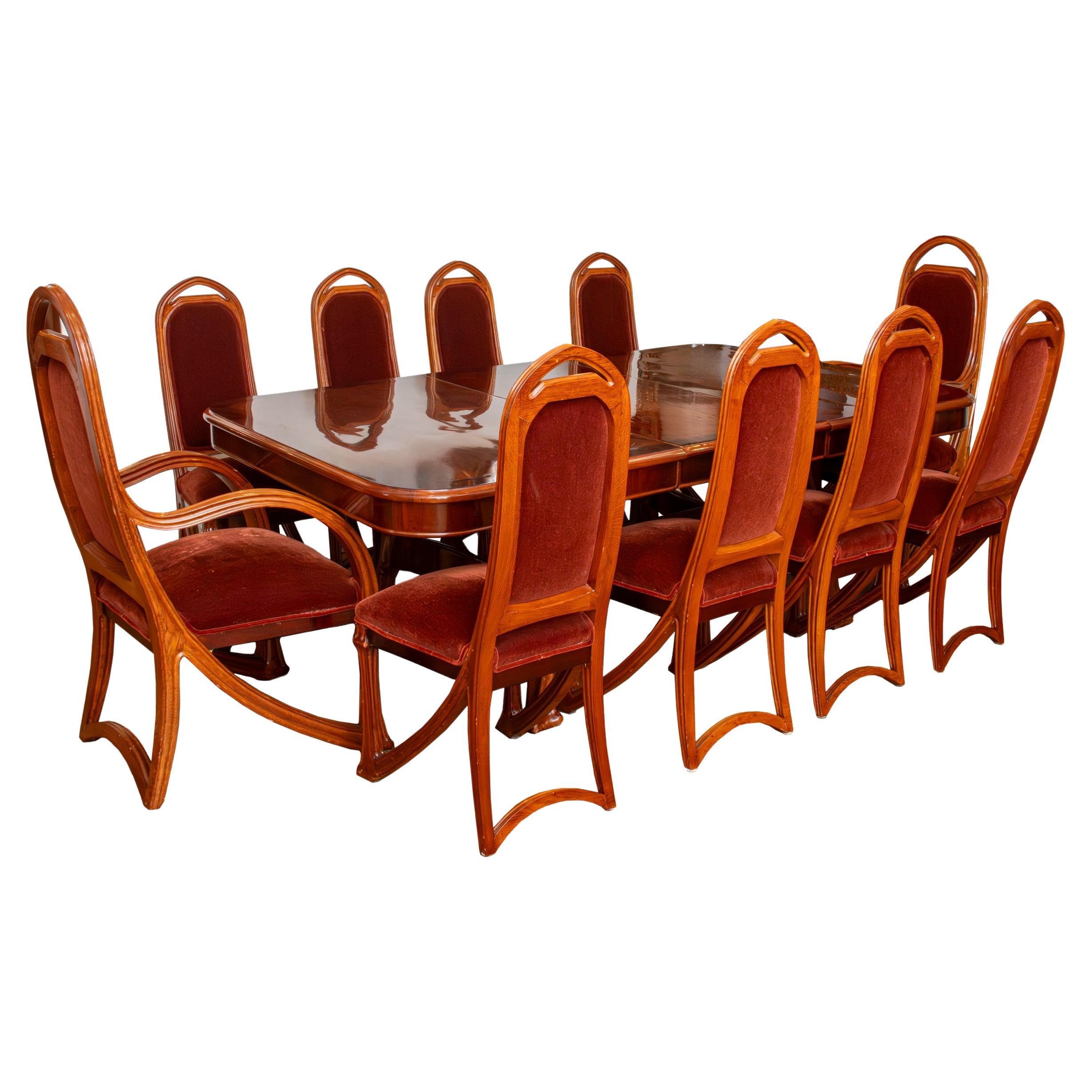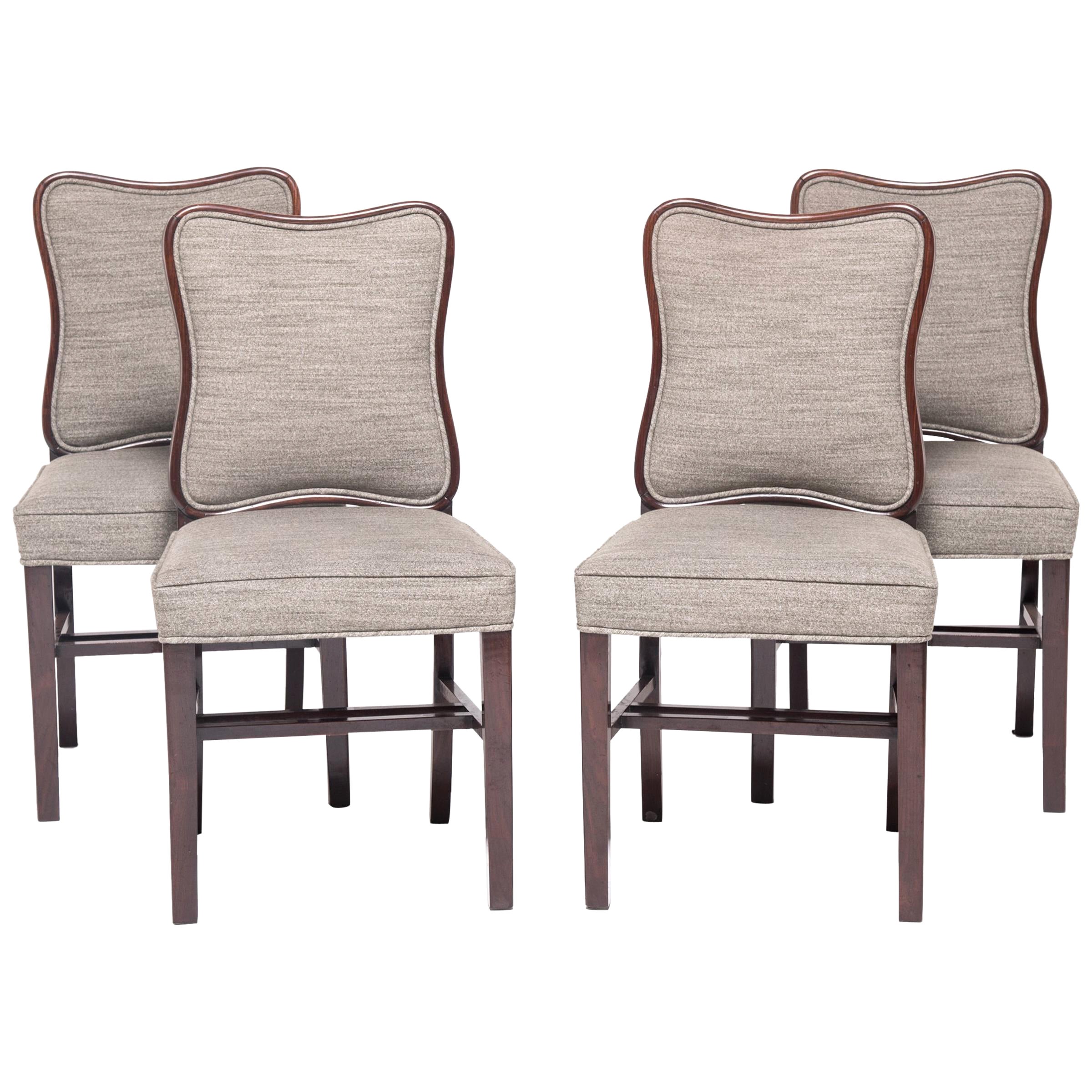Items Similar to Neo-Renaissance Dining Room Set Att. to Barbedienne, Meynard & Sevin, circa 1890
Want more images or videos?
Request additional images or videos from the seller
1 of 21
Neo-Renaissance Dining Room Set Att. to Barbedienne, Meynard & Sevin, circa 1890
About the Item
Display sideboard : height : 285 cm (112 in.) ; width : 215 cm (84,6 in) ; depth : 70 cm (27,5 in.)
Table (without extension) : height : 76 cm (29,9 in.) ; width : 170 cm (66,9 in.) ; depth : 120 cm (47,2 in.) / Extensions (x 2) : width : 45 cm (17,7 in.) ; depth : 120 cm (47,2 in.)
Dresser : height : 180 cm (70,8 in.) ; width : 215 cm (84,6 in.) ; Depth : 65 cm (25,6 in.)
Chairs : height : 114 cm (44,8 in.) ; width : 48 cm (18,9 in.) ; depth : 45 cm (17,7 in.)
Woodwork attributed to Maison Meynard (1808-1889), Meynard Fils; ormolu mounting by Ferdinand Barbedienne (1810-1892) from drawing by Louis-Constant Sévin (1821-1888).
This rare Neo-Renaissance dining room furniture by the woodwork factory Meynard is representative of the taste for historical style in the second half of the 19th century.
Consisting of a monumental display sideboard, a dresser, a table and eight chairs, it is made of sculpted wood, adorned with gilded bronze by Ferdinand Barbedienne, probably inspired by drawings of Constant Sévin.
This furniture is unified by repeated patterns, “brèche St Maximin” marble columns with gilded bronze capitals, ormolu medallions representing Renaissance inspired faces in profile, an ormolu faun mascaron and ribbed vases with ionic capitals.
Important two part, Neo-Renaissance style sideboard : the lower part comprising four doors embellished with low reliefs in gilt bronze alternating with four detached columns of “brèche St Maximin” marble with Corinthian capitals. The upper part comprises two doors ornamented with gilt bronze low reliefs cast by Ferdinand Barbedienne, representing two nymphs after those sculpted by Jean Goujon in 1547 for the Fountain of the Innocents in Paris. On each side gilt bronze caryatids sheathed in Campan marble and recesses decorated with chains of fruit emphasize the structure of the piece. A pediment bearing the gilt bronze mask of a faun completes the ensemble.
The dresser is compartmented in a tripartite lower part, divided by marble and gilt bronze columns.
Two doors, adorned with gilt bronze Florentine Renaissance style medallions, flank the glass case in the centre. Three sculpted frieze drawers support the top. The upper part is divided in three panels: in niches on each side two gilt bronze statuettes surround the central gilt bronze pattern. Statues represent two women draped in the antic style, one holding a palm, the other a cornucopia. Two sculpted chimeras finished the décor on each side. The semi-circular pediment surmounting the upper part presents a gilt bronze faun mascaron.
The dining room table and its three leaves are standing on four richly decorated legs ending in lion claws, doubled with marble columns topped by gilt bronze Corinthian capitals. A strut supporting three ribbed balusters and two ionic capitals vases links the legs.
Eight chairs complete this Neo-Renaissance dining room. The base rests on four legs, the anterior baluster and capital legs and the posterior square section legs, linked by a strut. The back of chairs is adorned with a rich sculpted décor and flanked by two capitals columns. The lower part is decorated with an openwork sculpted vegetal ornament. The wood pediment is ornamented with a central polished marble cabochon.
The renowned firm of Meynard was established at 50 Faubourg-Saint-Antoine in Paris in 1812. Created by Guillaume Meynard, the company became famous under the name of Father-and-Son Meynard when in 1833, Guillaume-Mathieu, the eldest child of Guillaume Meynard joined him. His father left his son alone managing the family-owned business from 1848. Guillaume-Mathieu was joined by his son Léon-Guillaume in 1866. The firm was then called Meynard and Son. Under the same name, Léon-Guillaume, then representing the third generation, took leadership from 1873 until 1889 when he sold his business to Eugène Frager. After winning numerous awards at the Products of Industry Exhibitions and later at the Universal Exhibitions (a gold medal won in Paris in 1878), the Frager furnishing and decoration company perpetuated the excellent reputation of the firm by being awarded a silver medal at the Paris Universal Exhibition of 1889.
The low reliefs and other bronze ornaments of this sideboard, of very high standard quality, were cast in the workshops of Ferdinand Barbedienne after designs by Constant Sévin. Those designs had been already used successfully on a bookcase exhibited by Sévin and Barbedienne at the Paris Universal Exhibition of 1867. Ferdinand Barbedienne (1810-1892) started one of the most famous 19th century artistic bronze casting companies. In addition to his personal production, he worked for famous artists such as Clésinger and Carrière-Belleuse. These artists production – as illustrated in their catalogue – varied from busts and ornamental sculptures such as clocks, candlesticks, sconces to decorations for furniture, as shown on our sideboard. Barbedienne’s production was always highly esteemed and he was, himself admired by contemporary art critics who compared him during the 1878 Universal Exhibition to a “prince of industry and the king of bronze-casting”.
Louis-Constant Sévin (1821-1888) designed silver-smith’s objects for famous firms like Denière and Froment-Meurice, before working for Barbedienne as sculptor-ornemanist since 1855. Sévin’s works are considerable, he designed furniture bronzes for the « hôtel de La Païva » and was particularly remarked at the London Exhibition in 1862, where he was awarded a medal. The most extraordinary object designed by Sévin for Barbedienne, was a Renaissance style gilded bronze monumental clock, for which Sévin won a gold medal at the Universal Exhibition in 1878.
- Attributed to:Louis-Constant Sevin (Designer)Ferdinand Barbedienne (Manufacturer)
- Dimensions:Height: 112.21 in (285 cm)Width: 84.65 in (215 cm)Depth: 27.56 in (70 cm)
- Sold As:Set of 11
- Style:Renaissance Revival (In the Style Of)
- Materials and Techniques:
- Place of Origin:
- Period:
- Date of Manufacture:circa 1890
- Condition:Wear consistent with age and use.
- Seller Location:PARIS, FR
- Reference Number:
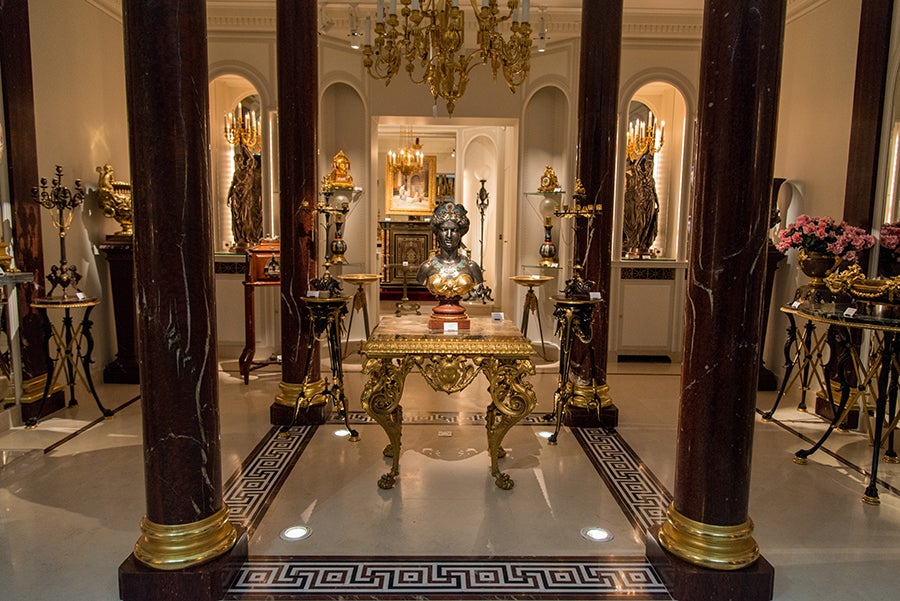
About the Seller
4.9
Vetted Seller
These experienced sellers undergo a comprehensive evaluation by our team of in-house experts.
Established in 1997
1stDibs seller since 2018
76 sales on 1stDibs
Typical response time: <1 hour
Associations
International Confederation of Art and Antique Dealers' Associations
- ShippingRetrieving quote...Ships From: Saint Ouen, France
- Return PolicyA return for this item may be initiated within 7 days of delivery.
More From This SellerView All
- Onyx and Bronze Neo-Greek Gueridon Att. to Barbedienne and Sevin, France, c.1880By Ferdinand Barbedienne, Louis-Constant SevinLocated in PARIS, FRGueridon made in silvered and gilded bronze, composed of four claw feet decorated with lion’s head held together by crossed bars in gilded bronze. It is surmounted by a large onyx to...Category
Antique 1880s French Greek Revival Gueridon
MaterialsOnyx, Bronze
- Pair of Neo-Greek Gueridons Attr. to L.C Sevin & F. Barbedienne, France, c. 1880By Ferdinand Barbedienne, Louis-Constant SevinLocated in PARIS, FRPair of patinated and gilded bronze high guéridon attributed to L.C Sevin and F. Barbedienne, with for each of them, three paw feet joined by X shaped stretche...Category
Antique 1880s French Greek Revival Gueridon
MaterialsGriotte Marble, Bronze
- Neo-Greek Gueridon Attributed to F. Barbedienne, France, Circa 1880By Ferdinand Barbedienne, Louis-Constant SevinLocated in PARIS, FRA similar model was exposed at the 1889 Paris Universal Exhibition ( see picture attached) Patinated and gilded bronze gueridon with four paw feet joined by X-shaped stems, attributed to Sévin and Barbedienne. Round green marble top mounted with a bronze rim adorned with oves and pearls motif. Born in 1821 and dead in Paris in 1888, Louis-Constant Sévin was apprenticed to the parisian sculptor Marneuf. In 1839, he joined the sculptor-modelors Phénix and Joyau, as designer, and designed silver-smith’s objects for famous firms like Denière, Froment-Meurice, Morel and Duponchel. During the Revolution in 1848, C. Sévin joined Morel in London, as workshop manager and designed pieces that Morel exhibited in 1851. Back in France in 1851, C. Sévin went to Limoges and designed models for the porcelain factories of Jouhanneaud and Dubois of which many pieces were exhibited at the Universal Exhibition in 1855. From this date on, he worked for Ferdinand Barbedienne as sculptor-ornemanist until the end of his life. Sévin’s works are considerable, he designed furniture bronzes for the « hôtel de La Païva ». At the London Exhibition in 1862, he was awarded a medal « pour l’excellence artistique des meubles qu’il a dessinés et qui sont exposés par Barbedienne » : for the artistic excellence of the furniture he designed and which is exhibited by F. Barbedienne. He won a second class medal at the Union centrale des Arts décoratifs Exhibition in 1863 and was awarded a gold medal as « cooperator ». F. Barbedienne said that posterity would remember Sévin’s compositions. The most extraordinary object designed by C. Sévin for F. Barbedienne, was a Renaissance style gilded bronze monumental clock...Category
Antique 1880s French Greek Revival Center Tables
MaterialsMarble, Bronze
- Japanese Style Tray Attributed to L.-C. Sevin & F. Barbedienne, France, c. 1860By Ferdinand Barbedienne, Louis-Constant SevinLocated in PARIS, FRRich landscape in cloisonné enamel on blue and brown background imitating Aventurine stone, attributed to L.C. Sevin and F. Barbedienne. The decor represents a river surrounded by wi...Category
Antique 1860s French Japonisme Centerpieces
MaterialsEnamel, Bronze
- Pair of Trumpet-Shaped Byzantines Vases, L.C. Sevin&F. Barbedienne, France, 1880By Louis-Constant Sevin, Ferdinand BarbedienneLocated in PARIS, FRSigned F. Barbedienne A pair of charming trumpet-shaped vases in gilt bronze with a polychrome cloisonné enamel decoration, one blue and the other green and red. They feature two annular handles and stand on four feet surmounted by a stylized palm. The vases are ornated with a Byzantine decoration. The high quality of the enamel is typical of Barbedienne’s production. It enhances this pair of vases especially with the wide range of colours used to create the decoration. The enamel is smooth and shiny and shows many shades to form the Byzantine decoration. The partitioned cloisonné is finely engraved and contributes to the decoration by adopting vegetal and foliage shapes. The Model These two vases can be linked to a vase presented by Ferdinand Barbedienne at the 1862 London Universal Exhibition and purchased at this time by the South Kensington Museum (now the Victoria and Albert Museum, London, Inv. 8026-1862). This vase has on its belly a polychrome cloisonné enamel decoration standing out against a turquoise background as show these vases. This decoration, called Byzantine, covers all the vase with coloured arabesques and scrolls. It rests on four claw feet with lion heads from a design near of our vases. Barbedienne and the Cloisonné Enamel Ferdinand Barbedienne continously innovated and he revived the use of enamel on art works during the second half of the 19th century. The Sèvres Manufacture enamel workshop had ever tried it in 1854-1855, but Barbedienne was the one who succeeded to join enamel to an industrial decorative objects production. From 1858 “At Mr Barbedienne’s, enamels in copper ornaments have got their former prestige back” (Les bronzes de la Maison Barbedienne, C. Simon, in L’Art du XIXe siècle, 1858, n°21, p. 252). The Barbedienne Company had now an enamel workshop where objects ornamented with oriental style or medieval style enamels were made. Four years after, Barbedienne’s cloisonné...Category
Antique 1880s French Other Vases
MaterialsBronze, Enamel
- Large Neo-Greek Vase by F. Levillain & F. Barbedienne, France, circa 1890By Ferdinand Levillain, Ferdinand BarbedienneLocated in PARIS, FRImportant neo-Greek vase in the shape of an Amphora, made in two patina bronze. The body is decorated with a rich continuous frieze in bas-relief presenting a procession of characters carrying their offerings to the temple, underlined by a decoration of theatrical masks among olive trees. The 's'-scroll handles decorated with grape vines, resting only on the shoulder of the vase, are supported by a ram’s head. Numerous palmettes and friezes adorn the whole. Resting on a molded marble circular base. Biography Ferdinand Levillain (Paris, 1837-1905) studied under the sculptor Jouffroy (1806-1882), before making his debut in 1861 at the French Artists Salon where he continued to exhibit until 1903. At the 1867 Universal Exhibition in Paris, he was praised for a Neo-Greek style bronze cup he made for the firm Blot and Drouard. He was not to become really famous, however, until 1871 thanks to his association with the great bronze founder Ferdinand Barbedienne, who began to exhibit Neo-Greek style lamps...Category
Antique 1890s French Greek Revival Vases
MaterialsMarble, Bronze
You May Also Like
- 19th C. Neo-Renaissance Revival French Portrait Medallion CabinetLocated in BALCATTA, WAWe have a strong love for Renaissance Revival furniture and art here at Galeries Talitha Marco and this piece embodies that entirely! This cabinet is made out of French oak and is da...Category
Antique 19th Century Furniture
MaterialsWood
- Ming Square Table, circa 1890Located in Somis, CAAn extraordinary 19th century oversize Ming square table. The table top is constructed of four frame members and rests on the waist and apron that connect to four rounded legs. Such ...Category
Antique Late 19th Century Chinese Ming Furniture
MaterialsWood
- Dining Room Set of a Table and 6 Chairs by Marc Held for IBMBy Marc HeldLocated in Berlin, BEMarc Held is a renowned French designer known for his innovative contributions to fashion and design. Born in Paris in 1942, he studied at the École Nationale Supérieure des Arts Déc...Category
Vintage 1980s French Furniture
MaterialsSteel
- Louis Majorelle Art Nouveau Dining Room SuiteBy Louis MajorelleLocated in New York, NYLouis Majorelle (French, 1859-1926) Art Nouveau Ash and Mahogany Dining Room Suite, circa 1900, comprising: Two Armchairs, Eight Side Chairs And a Dining Table With Two Modern Extens...Category
Antique Mid-18th Century Art Nouveau Furniture
MaterialsVelvet, Mahogany
- Chinese Carved Wood Living Room SetLocated in Budapest, HUChinese carved wood living room set, consisting of one table, two armchairs and one couch. Table Diameter: 60 cm Height: 67 cm Armchairs (2...Category
Early 20th Century European Chinoiserie Furniture
MaterialsWood
- Set of Four Chinese Deco Dining Chairs, circa 1930sLocated in Chicago, ILMade in the 1930s to satisfy the worldwide hunger for all things Art Deco, these unique chairs combine the streamlined style of the era with a Classic Chinese aesthetic. The beautifu...Category
Vintage 1930s Chinese Art Deco Dining Room Chairs
MaterialsWool, Hardwood
Recently Viewed
View AllMore Ways To Browse
Antique Designs Furniture
Antique Design Furniture
Antique Dining Room Set
Antique Dining Room Sets
Antique Antique Dining Room Set
Dining Room Set Antique
Dining Room Sets Antique
Antique Dining Room Sideboard
Antique Sideboard Dining Room Furniture
Dining Room Sideboard Antique
Antique Dining Room Decor
Asian Family
Asian Faces
Circa 76
Dining Room Dresser
Antique Room Divider Furniture
Drawing Room Set
Gilded Asian
